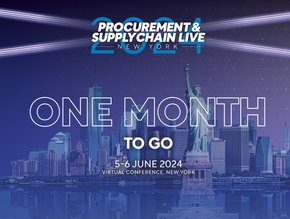How sustainability is influencing product design

There are many factors that can influence a buyer’s purchasing decision. Cost, convenience and verified product or service reviews are examples of the main factors that people have traditionally considered when they want to buy a new product or service – however, in recent years, this has shifted.
As part of the evolution of the purchasing experience, consumers are also expecting safer goods that are more environmentally responsible. This changing demand from consumers means that organisations are reinventing the way they plan, design and produce their products and services, with sustainability now front of mind. But sustainable product design can be challenging, and organisations must consider the entire supply chain and ensure that their product is not only environmentally friendly but also satisfies consumers.
Our mindsets are changing
Acknowledging the need to start operating more sustainably is the first step towards becoming a leading sustainable organisation. Conversations around climate change and what’s happening to our planet are prevalent and consumers are more aware than ever of the arguments in favour of changing behaviour and habits to be more sustainable on both a micro and macro level. A recent survey found that consumers are willing to pay more for sustainably produced products, meaning sustainable products are in higher demand and consumers are willing to prioritise them. Using green products has also been shown to make people happier, enhancing the enjoyment of their experience of the product.
As these consumer mindsets have developed, the pressure is increasing on businesses to transform their operations to be more climate responsible. Sustainability is becoming a core part of the business for many companies across almost all industries. High-profile brands have been announcing their carbon neutral plans at an unprecedented rate at the start of this decade. For example, Microsoft has taken their sustainability plans to the next level by committing to being carbon negative by 2030.
What the supply chain can do
There are several frameworks and many coalitions forming to develop sustainability solutions for specific industries. For example, organisations such as the Sustainable Apparel Coalition or the Sustainable Packaging Coalition have developed standardised value chain measurement tools to help organisations measure their social and environmental impact. By using this measurement, organisations can address flaws and inefficiencies in their processes, improve their sustainability performance and maintain a level of environmental transparency, helping them move one step closer to achieving their targets on carbon dioxide emissions and waste.
Then there’s the lifecycle assessment of a product – including its raw material use through end of life scenarios and potential alternatives for designing waste out of the system. Are there ways to make the product componentised, such that if the entire product can’t be recycled or refurbished can it be deconstructed in a manner to allow other goods to be created?
Identifying where sustainability measures can be put in place across the supply chain is one thing, finding innovative ways to be sustainable without passing higher prices onto the consumers is another – and that’s where the main challenge lies in product design. However, there are two ways to overcome cost issues when developing sustainability practices in the supply chain.
The first is by integrating circular economy into practices, such as through direct product innovation. We’ve seen this already with companies incorporating recycled materials into their products – this is becoming increasingly common in the manufacture of clothing and footwear.
The second is through organisations developing innovative product and service models. The likes of IKEA, for example, are planning on testing furniture rentals and leasing, which would use less materials and resources. By adapting existing services, organisations can implement innovative ‘greener’ solutions in their company that are mutually beneficial to both the company and the consumer.
What to expect going forward
Currently, we are seeing new entrants inject exciting innovations into the marketplace, and challenging established companies to adapt their products, but many companies still have a long way to go. It’s estimated that over 70% of Fortune 500 company emissions come from their value chain, not the direct energy they use.
Businesses big and small must develop a company culture with sustainability embedded at its core. In today’s market, implementing clear objectives, which every department and employee can drive towards, and transforming operations to become more sustainable is critical to satisfying changing buyer demands and enabling companies to experience the many benefits that sustainable business practice has to offer.
Ultimately, both consumers and businesses alike will benefit from sustainable innovation and company strategy. In spite of the challenge’s businesses may face short term, the longer lasting effects will be felt by consumers, employees and stakeholders.
By Shy Muralidharan, Director, Product Management at ENGIE Impact and Susanna Cagle, Senior Product Manager at ENGIE Impact






